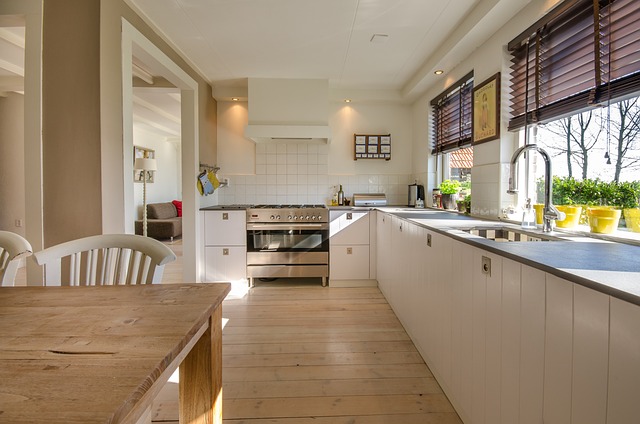Transform your home into an eco-friendly haven by adopting DIY energy-efficient lighting solutions, such as switching to LED lights and installing dimmers or motion sensors. Natural daylight strategies, like skylights and light tubes, further reduce electricity consumption. Smart home automation systems adjust lighting based on routines, offering convenience and significant energy savings. These projects not only shrink your environmental footprint but also empower effective energy management.
Looking to transform your home into an energy-efficient oasis? This guide is your DIY companion, offering practical yet impactful solutions to make your residence more sustainable. From optimizing lighting and temperature control to choosing eco-friendly materials, we’ve got you covered. Discover simple, smart upgrades like LED light replacements, natural lighting strategies, and smart thermostats that promise comfort without compromising the planet. Get ready to roll up your sleeves and embark on a journey towards a greener home!
Lighting Up Your Home Efficiently
Transforming your home with DIY energy-efficient projects is an excellent way to reduce your environmental impact and save on utility bills. One of the simplest yet most effective areas to start is lighting. Replace traditional incandescent bulbs with LED lights; they use up to 75% less energy and last much longer, reducing frequent replacements. Additionally, install dimmers or motion sensors to control light usage in various rooms, ensuring that lights only come on when needed. This simple switch can significantly lower your electricity consumption.
Explore the option of adding natural lighting through window placements or skylights during daylight hours, further reducing artificial light demands. For a more advanced project, consider creating a smart home setup with automated lighting systems that adapt to your routines and preferences. These changes contribute to a greener, more sustainable living space while providing you with control over energy usage in your very own hands.
– LED light upgrades
Upgrading your lighting system is one of the simplest and most effective ways to make your home more sustainable through energy-efficient home projects. LED lights are a game-changer in this regard, offering a bright future for both your wallet and the environment. Unlike traditional bulbs, LEDs consume significantly less electricity, reducing not just your carbon footprint but also your energy bills.
By replacing old incandescent or fluorescent bulbs with LED equivalents, you’ll notice a substantial difference in both longevity and efficiency. These lights last much longer, minimizing frequent replacements and associated waste. Moreover, their versatility allows for tailored lighting in various rooms, enhancing ambiance while ensuring you use only the necessary energy, making them a cornerstone of any eco-conscious home transformation project.
– Natural lighting strategies
Natural lighting is a free and renewable resource that can significantly reduce your energy consumption, making it a key element in any energy-efficient home project. Strategies such as placing windows strategically to capture sunlight during the day or installing skylights can illuminate your space without relying on artificial lights. This not only saves on electricity bills but also contributes to a healthier living environment and reduces your carbon footprint.
For an even more energy-efficient approach, consider adding light tubes or solar tubes that direct daylight into darker areas of your home, like attics or basements. These tubes are designed to minimize heat gain, ensuring you benefit from natural light without increasing your cooling costs. By incorporating these simple yet effective techniques, homeowners can create a bright and sustainable living space while contributing to a greener planet.
– Smart dimmer switches and sensors
Implementing smart dimmer switches and sensors is an excellent way to kickstart your journey towards an energy-efficient home. These innovative devices allow you to control lighting and temperature with precision, significantly reducing power consumption. For instance, motion sensors can automatically turn off lights in unused spaces, while dimmer switches let you adjust brightness according to natural light availability, thereby cutting down on electricity bills and environmental impact.
By integrating these technologies, your home becomes more responsive and adaptive. You’ll not only save energy but also create a comfortable living environment tailored to your daily routines. As part of an overall energy-efficient home project, smart dimmers and sensors offer both practicality and sustainability, contributing to a greener future for your family.
Turning your home into a more sustainable space doesn’t have to be an overwhelming task. By implementing simple DIY ideas like upgrading to LED lights, strategically utilizing natural lighting, and installing smart dimmer switches or sensors, you can significantly contribute to creating an energy-efficient home while reducing your environmental impact. These projects not only benefit the planet but also offer cost savings and enhanced comfort over time. Embrace these sustainable living practices and lead by example in your community.
